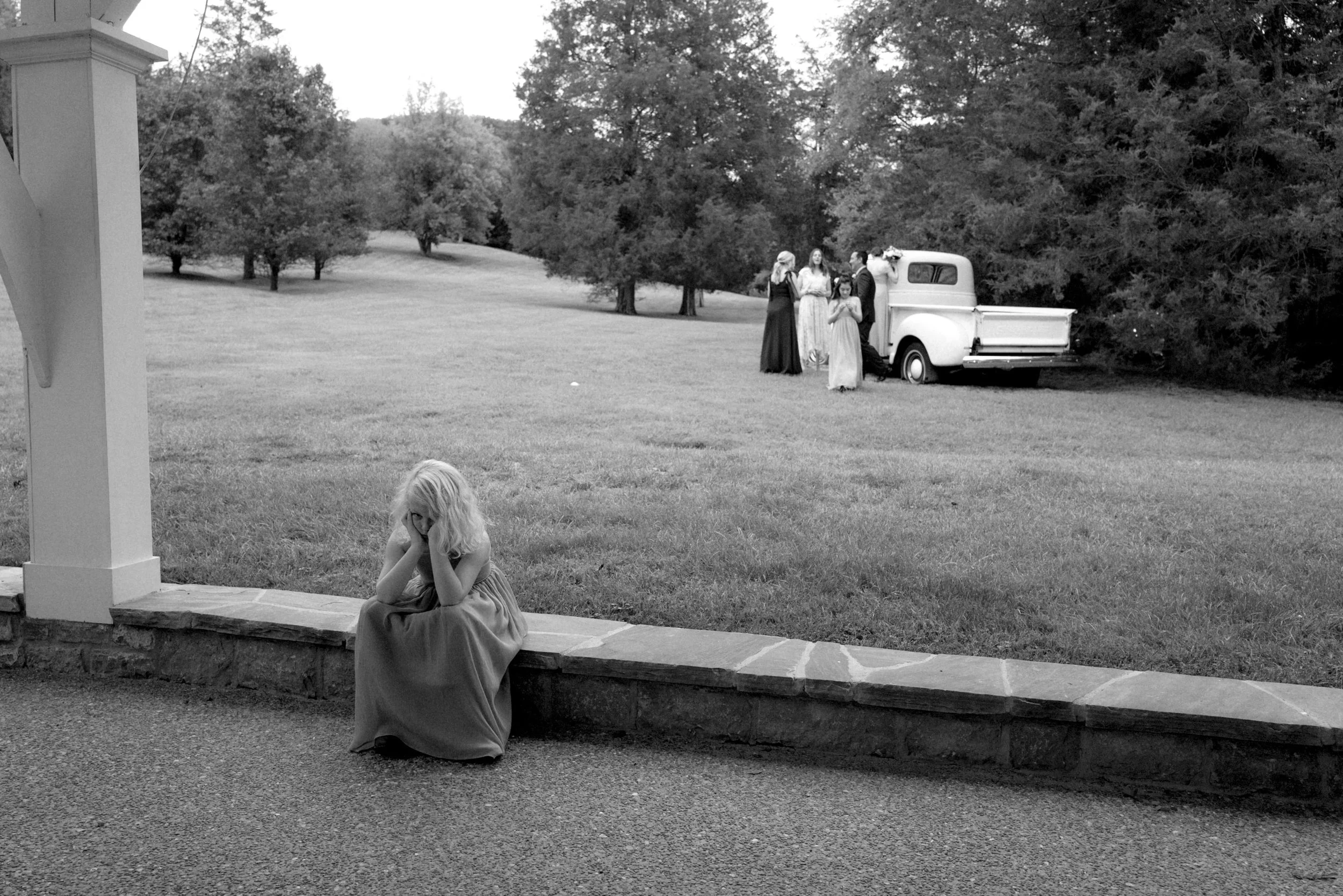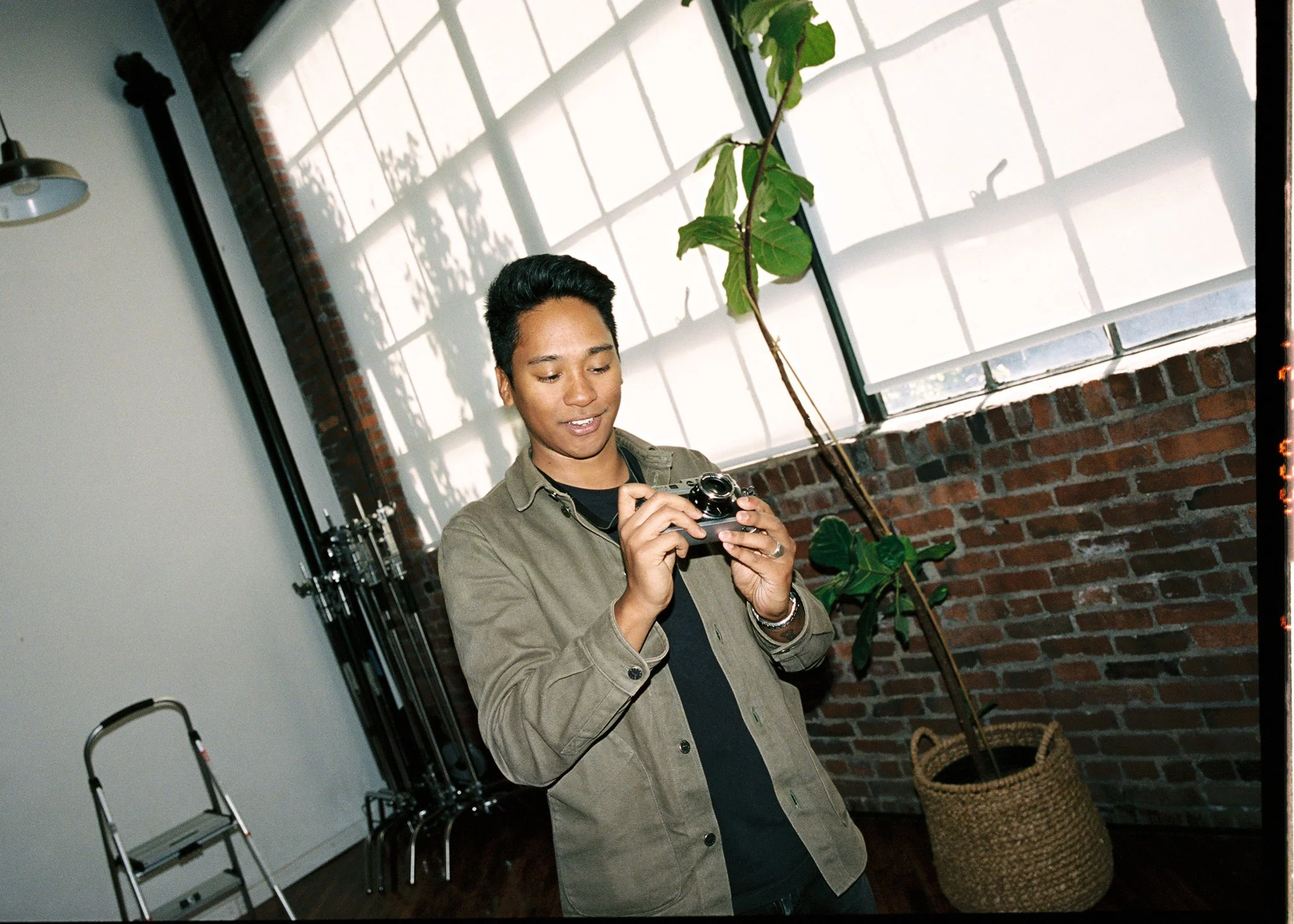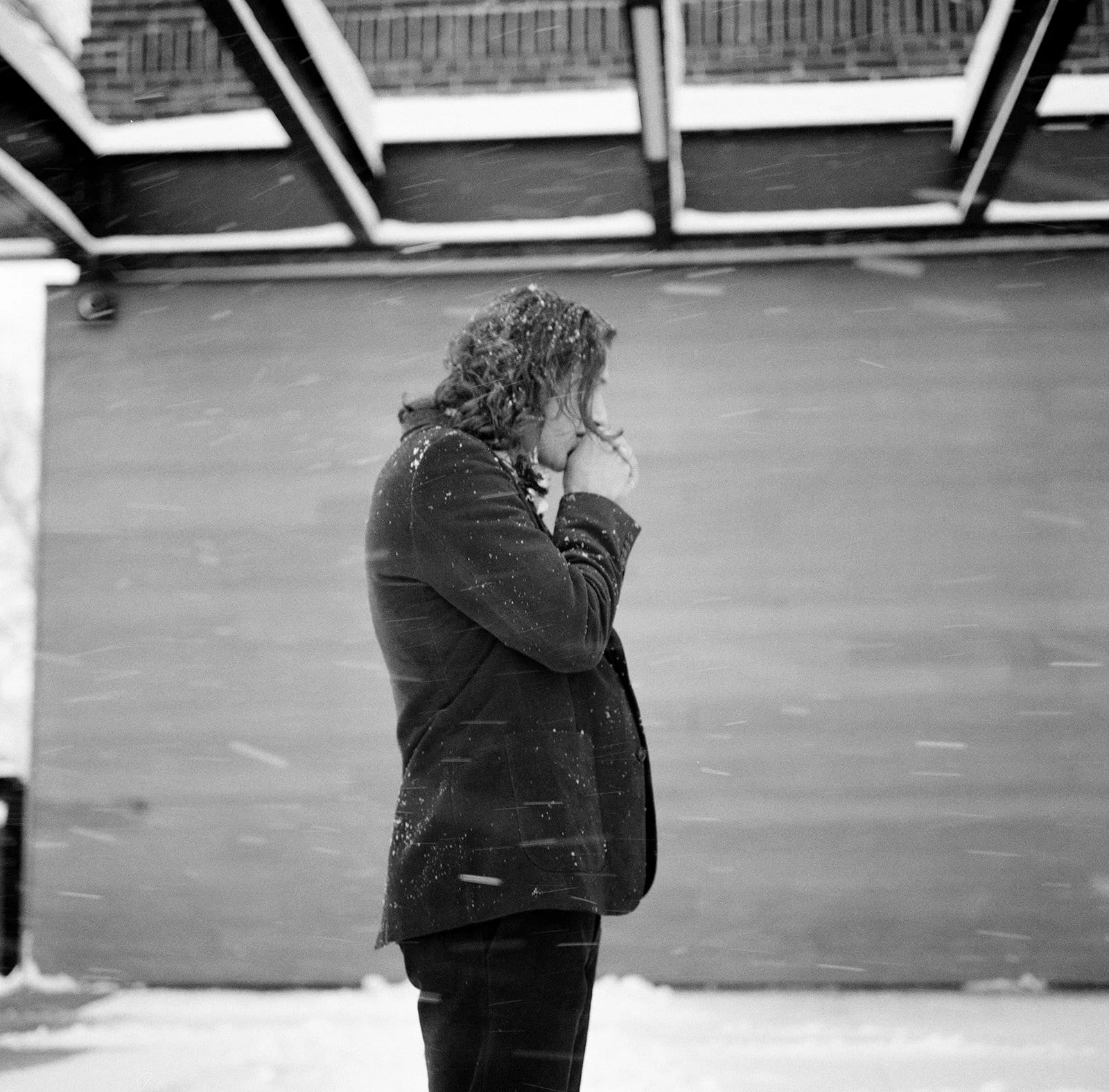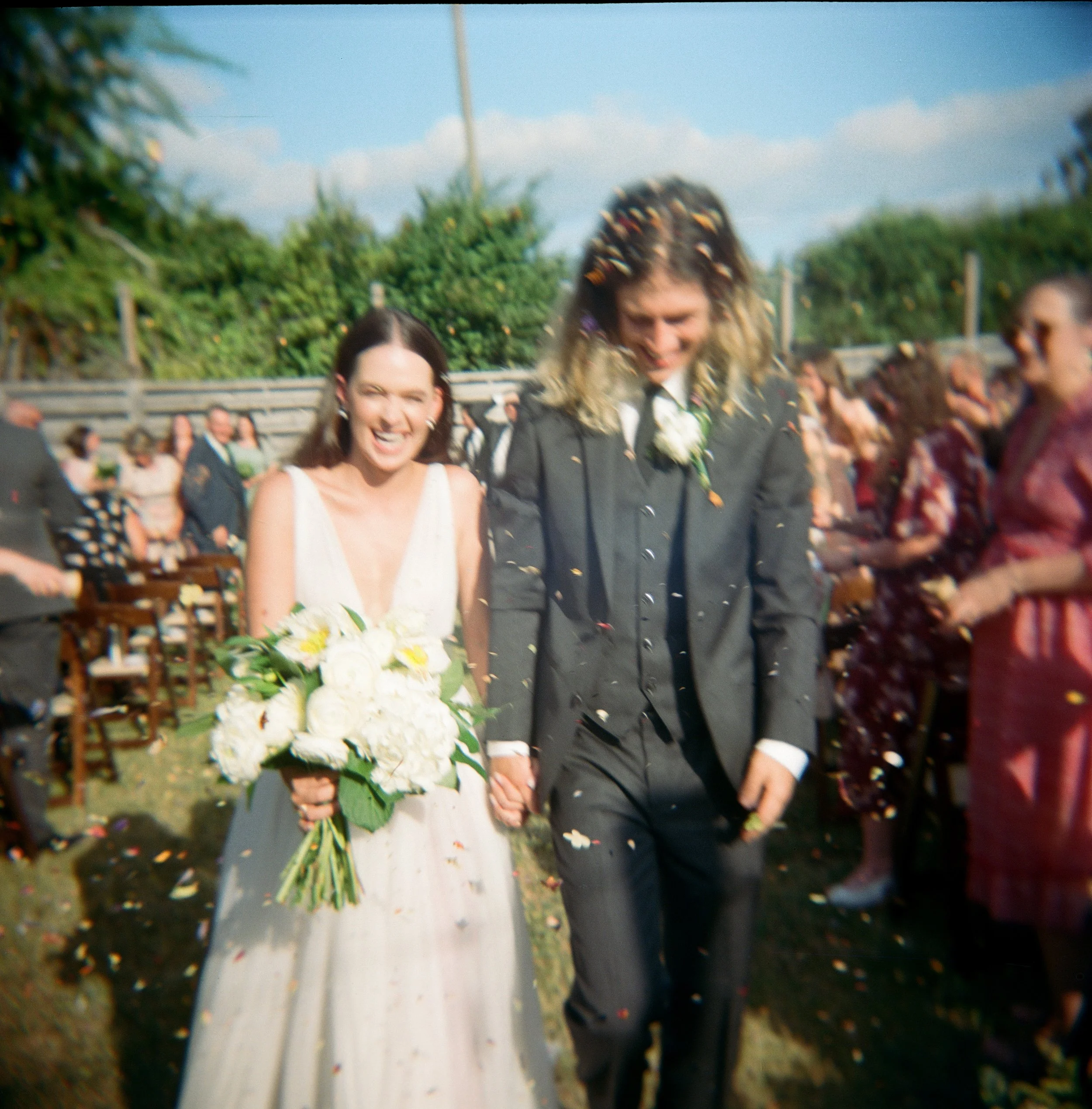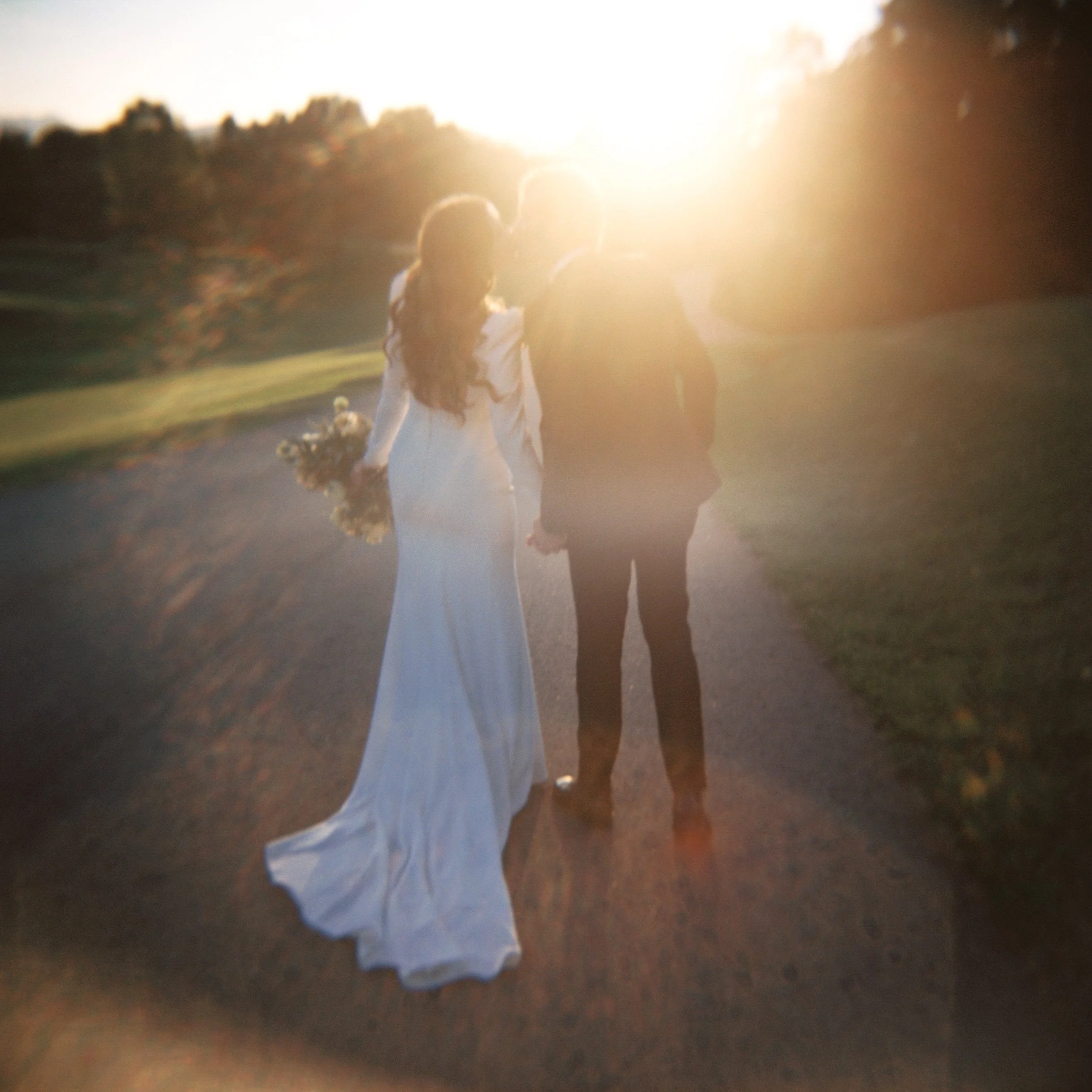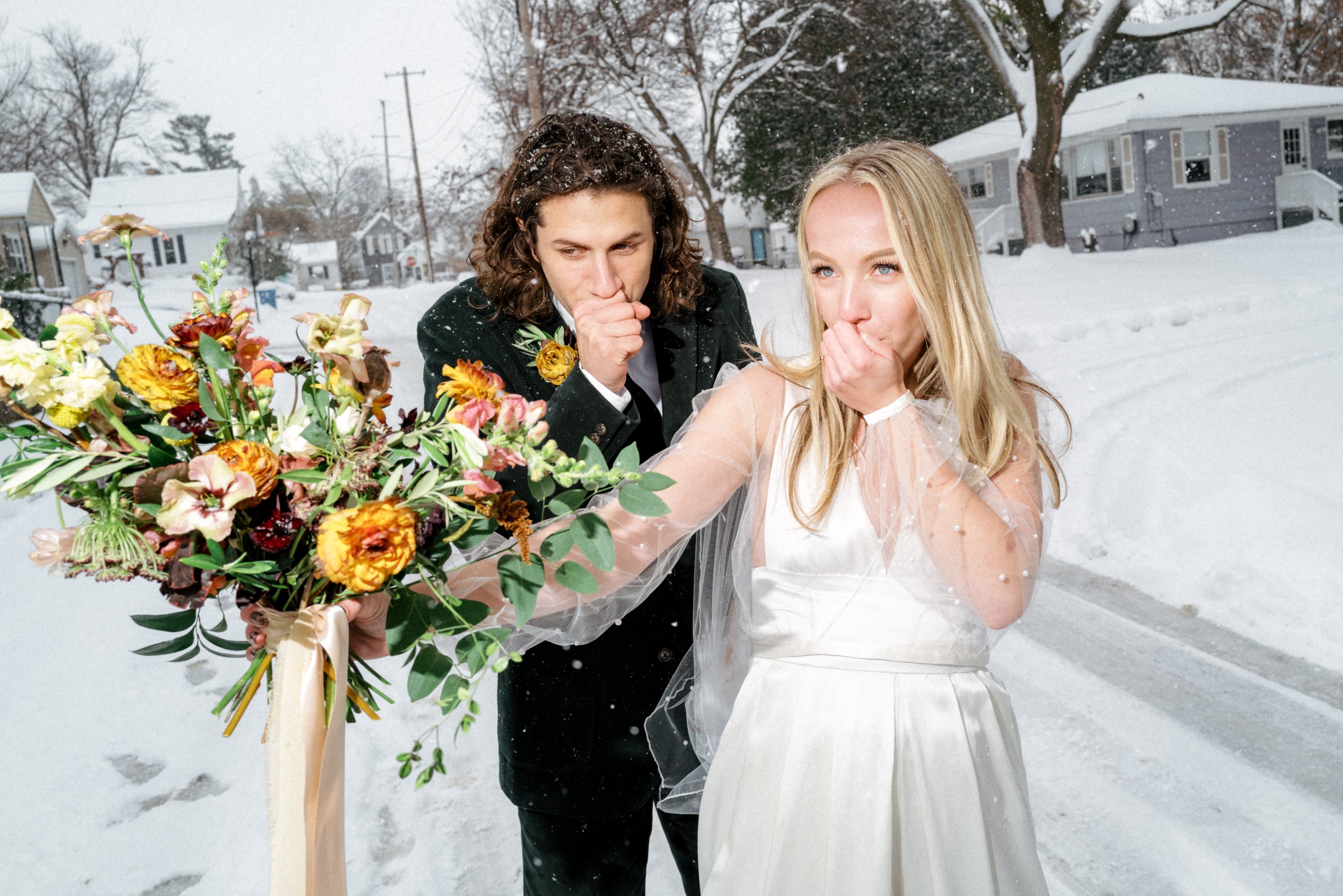Everything a Documentary Film Photographer Brings to a Wedding
I’ve always been fascinated by what other photographers bring to photograph a wedding. At the end of the day, you just need a camera and lens, and the rest falls on the skill and ability of the photographer. But let’s be honest, buying new gear is fun. Photography is such a diverse medium of art, and because of that, there’s no perfect combination of gear to get the job done. But, It’s so hard to figure out what you need when there are so many options between brands, bodies, lenses etc. Last year alone, I went through about 15 different cameras to figure out what worked for me. My advice? Figure out what your goals are with photography first. After that, build out a kit that supports those goals.
As a Documentary Wedding Photographer, my style of photography leans heavily toward 35mm and Medium Format film. The rest of my digital gear is set to support my film cameras in areas where film cameras can struggle (low light, focus). To this day, I’m still trading out cameras and lenses to find what works best. If you’re having trouble connecting with a camera, don’t be afraid to try new ones. Trying different cameras also pushes you to become a better photographer by breaking you out of your normal routines, go-to settings, deep dynamic range, or laser quick autofocus. If you’re feeling creatively stuck in photography, switching up your tool kit is a great way to grow!
In this blog post, I’ll go over all the gear I bring to weddings, such as:
Digital Cameras and Lenses
Film Cameras and Lenses
Flashes
Bags
Straps and Other Accessories
I also included some budget options where possible. Let’s begin!
(Disclaimer: Some of the links below are Amazon Affiliate links that will direct you to my associate account through Amazon.com. As an Amazon Associate I earn from qualifying purchases at no additional cost on your end)
Digital Cameras
Sony A7IV
A solid option if you do both video and photo. I don’t have much to say about this camera because it just works. Snappy autofocus, big files, amazing dynamic range and it shoots wicked fast. I primarily use it during the ceremony, family portraits, and receptions. There are also plenty of native lenses and 3rd party options for all budgets. I actually switched from Canon in the middle of the busy season last year and have 0 regrets. While it ain’t no film camera, it’s good to have a fallback option in case something goes wrong with your gear throughout the day.
Budget Option - Sony A7iii
Lenses
Leica Q2
One of my favorites. A simple yet powerful, no-frills, candid-taking machine. It has a fixed 28mm 1.7 lens, which is perfect for capturing an entire scene, but also has a 48mp sensor, which allows for heavy cropping. On top of that, the colors are beautiful out of the camera, making editing a breeze. I’m not kidding when I say that 70% of my digital photos on a wedding day come from this camera. Why? I tend to gravitate toward this camera because, from the guests’ point of view, it’s not intrusive. As a documentary wedding photographer, getting in close to the action is such a large part of how I work on a wedding day. The way someone reacts to seeing this camera versus a camera with a 70-200 will be very different.
Budget Option - Fuji X100V
Pro tip - Make sure you buy fast SD Cards. I use these.
Taken on the Q2
Taken on the Q2
Film Cameras
Rolleiflex 2.8c
A medium format camera that shoots squares. I use this for a lot of the hero shots throughout the day (bridals portraits, couples portraits, details etc.) I think I’m particularly drawn to this camera due to its odd way of photographing. Instead of looking through an eyepiece, you open up the top and look down through a square hole to view your image. Because you tend to hold it more at your waist instead of at eye level, you get a slightly different perspective. And, with only 12 images per roll, you have to make each image count. I love the challenge of this camera and the images that I get from it.
Pro tip - When buying a Rolleiflex, worry less about which version to buy, and more about purchasing a clean and clear model. I went through 2 different Rolleiflexes with issues until I found one that was in good, working condition.
Budget Option - Yashica Mat 124G
Taken with the Rolleiflex
Taken with the Rolleiflex
Pentax 645n
I don’t actually own this camera anymore, but I think I’m going to repurchase it soon. One of the biggest things that deters most people from shooting film is relying on manual focus to get sharp images. This medium format camera changes that by adding autofocus. If you like shooting film but don’t want to rely on manual focus or need a faster shooting experience, the Pentax 645n is the one for you. It’s perfect for details, quick candids, and portraits.
Budget Option - Mamiya 645
Leica M6
My soul mate 35mm film camera and the one that changed my entire approach to photography and tested me as a photographer. This camera is around my neck for the entire day. My particular model is from the 80s, and is still kicking to this day. I tend to photograph things differently when I pick up this camera than with any other camera. Maybe it’s the simplicity, maybe it’s the build quality, or maybe it’s Henri Cartier Bresson blessing me beyond the grave. Either way, I know it’s special. The rangefinder way of shooting can be a little tricky to get the hang of at first, but if you’re Documentary Wedding Photographer that’s loves to capture quick candids, I think you’ll like the rangefinder method. If you foresee yourself shooting 35mm for the foreseeable future and want a camera that will last, I highly recommend the Leica M6.
Budget Option - Bessa R
Lenses
Voigtlander 28mm f/2 Ultron
Voigtlander 35mm f/2 Ultron
Budget Option - Voigtlander 35mm f/2.5 Skopar
Taken with the Leica M6
Holga
This is a $40 medium format toy camera. The entire thing is plastic, including the F8 lens. I think my favorite thing about this camera is the irony haha. Like come on, a plastic camera that shoots medium format film? That’s fricken hilarious haha. Because the lens is plastic, you get really funky and dreamy photos from this camera. The best part? The Holga has no meter or the ability to change the settings, so you really have to be aware of lighting conditions. I love using this camera during the dancing part of the reception and to get details throughout the day.
Taken with the Holga
Taken with the Holga
Flashes
Godox V1/FlashPoint R2
While on the bigger side, these flashes have a rechargeable Lithium-Ion battery. That means it recycles power much faster and the battery doesn’t need to be changed often. In fact, I probably change the battery once every 2 weddings.
Pro Tip - Godox and Flashpoint flashes are the exact same with different branding, so find whatever is cheapest!
Budget Option - Yongnuo 560IV
Canon 430ex ii
This is a relatively inexpensive flash that I like to throw on my Leica M6 and Holga. For how small it is, it has plenty of power, which is very important when shooting film. It also has a quick release which makes it easy to switch it on and off and put on different cameras.
LightPix FlashQ Q20ii
A fun little flash I’ve enjoyed using this past year. While at first glance, it may look like a small little flash. However, this little guy has a cool little trick up its sleeve. The flash is able to pop off of the mount on the hot shoe and still fire due to its built-in radio and receiver. I like to hold the flash in my left hand and get in close, so it pairs really well with the Q2. This flash gets the most action during the dancing part of the day.
Taken with the Lightpix Q20ii and the Q2
Bags
Pelican 1535
I travel quite a bit for weddings, so a Pelican is a must. This thing holds a ton while being indestructible while still meeting the carry-on size requirements of most airlines. It has wheels and a handle, so taking it through the airport is super easy. I recommend getting the TrekPak system for customization as well as a lid organizer for all of your accessories.
Peak Design Everyday Bag 20l Zip
This bag is my everyday work bag as well as my camera bag. It has customizable dividers that allow for easy changes depending on what gear you are using. Lugging around a Pelican at a wedding to different locations is a ton of work, so I’ve found that wearing a backpack to keep the things I need on me at that moment is super helpful. I will typically leave my Pelican in a secure place at a wedding, and put any cameras, lenses, accessories, etc in my backpack to take with me throughout the day. I try to get back to my Pelican at different points throughout the day to swap out gear, exchange batteries, and leave any gear that I might not be using anymore. If you’re not familiar with Peak Design, they make some of the best camera bags and straps in the game. AND, they offer a lifetime guarantee on all of their products. I’ve had 2 different bags rip at the zipper (my fault, not theirs) from them, and they sent me replacements within the same week. Favorite company ever.
Accessories
Clever Supply Dual Harness
It’s the perfect harness if you like to shoot with different cameras throughout the day thanks to Peak Design’s anchor technology. Simply slap a Peak Design attachment on all of your cameras and you’re good to go. And the leather looks so gooood. Clever Supply is a small business working out of Louisville. I was lucky enough to be able to see the operations firsthand and can definitely speak for the quality.
Anker 615 USB Power Strip
If you go through tons of batteries at a wedding, this power strip from Anker is a game-changer. It comes with 2 AC Outlets (the standard power outlet), 2 Fast Charging USB-C slots, and a USB-A slot. I use this thing to charge my Sony, Leica, Double AAs, and phone all at once throughout the day. Best part? When you’re not using it, the main cord wraps into itself neatly underneath a rubber cover. It’s perfect for travel because it’s absolutely tiny.
Peak Design Tripod
One of the lightest tripods you can find on the market currently. When it’s packed, it’s also one of the smallest tripods you can find. While a bit pricey, it’s backed by the Peak Design lifetime guarantee, so they’ll fix any issues or replace it for free if anything goes wrong.


